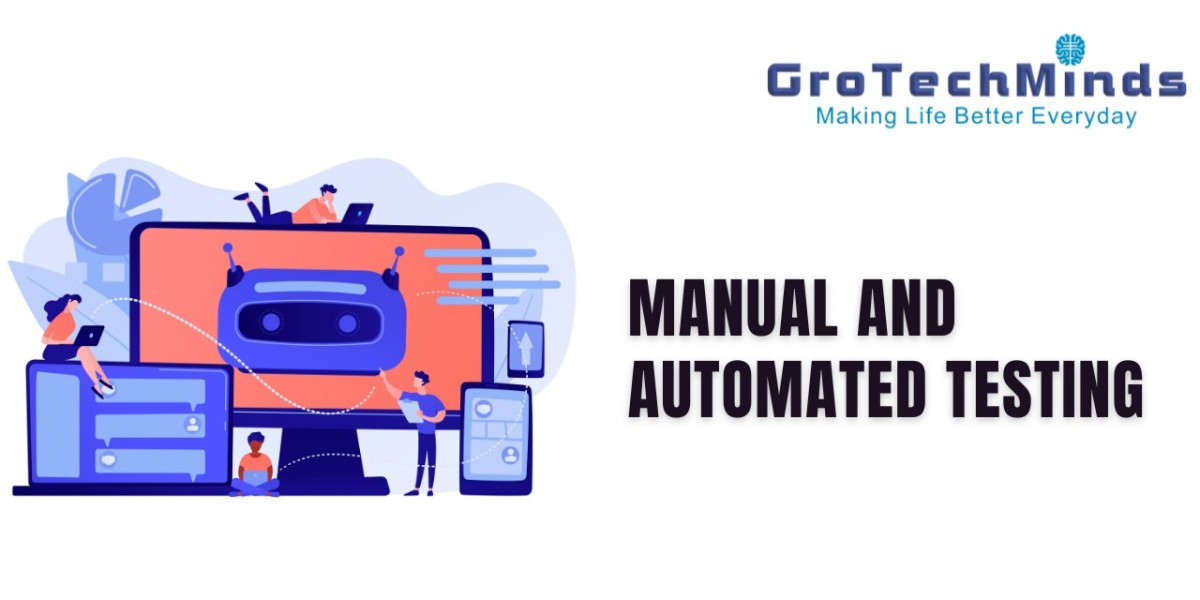Manual and automated testing
Introduction:
In the ever-evolving landscape of software development, testing plays a pivotal role in ensuring the quality and reliability of applications. Two predominant approaches, manual and automated testing, serve as the backbone of this process. This article aims to unravel the intricacies of both methods, shedding light on the key aspects that every testing enthusiast should be aware of.
Manual Testing: The Human Touch
Manual testing involves human testers executing test cases without the assistance of automation tools. While it may seem labor-intensive, manual testing offers certain advantages that automated testing struggles to replicate.
Exploratory Testing:
Human intuition plays a crucial role in exploratory testing, allowing testers to uncover unexpected issues that automated tests might overlook.
User Experience Testing: Manual testing excels at assessing the overall user experience, capturing nuances that automated tests might miss.
Automated Testing: The Need for Speed and Repetition
Automated testing relies on scripts and testing tools to execute predefined test cases. It is particularly beneficial for tasks that are repetitive, time-consuming, or require rapid execution.
Regression Testing: Automated tests are excellent for quickly running regression tests, ensuring that new changes don't break existing functionality.
Performance Testing: Automated tools can simulate thousands of users, allowing for efficient performance testing under various scenarios.
When to Choose Manual Testing?
Manual testing is ideal in certain scenarios, such as:
Usability Testing: Assessing the user interface and overall user experience.
Ad-Hoc Testing: Exploratory testing to identify unforeseen issues.
Short-Term Projects: Where the upfront investment in automation may not be justified.
When to Opt for Automated Testing?
Automated testing is preferable when:
Repetitive Tasks: Test cases that need to be executed frequently.
Large Projects: Especially those with a long-term development lifecycle.
Regression Testing: Ensuring that new code changes don't negatively impact existing functionality.
Challenges in Testing: Striking the Right Balance
Both manual and automated testing have their challenges. Manual testing can be time-consuming, prone to human error, and may lack repeatability. On the other hand, automated testing requires significant upfront investment, and certain aspects of testing, like usability and subjective assessment, are better handled manually.
The Hybrid Approach: Finding Harmony
Recognizing the strengths and weaknesses of each method, many development teams adopt a hybrid approach. Combining the strengths of manual and automated testing can lead to a more robust and efficient testing process.
Conclusion: A Balanced Testing Strategy
In conclusion, the choice between manual and automated testing is not a binary decision. A thoughtful and context-aware approach is essential. Teams should evaluate their specific needs, project requirements, and resources to determine the most suitable testing strategy. Ultimately, a balanced testing approach, leveraging the strengths of both manual and automated testing, is key to delivering high-quality software.
By understanding the nuances of manual and automated testing, development teams can make informed decisions that contribute to the overall success of their projects.
In short, understanding the techniques of manual and automated testing is critical for success in the fast-paced world of software development. Consider enrolling in a manual testing online course if you want in-depth expertise. These courses provide full guidance and a solid foundation in manual software testing. Accept the opportunity to improve your abilities with dedicated manual testing classes and stay ahead of the curve in this ever-changing business.








